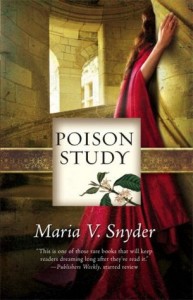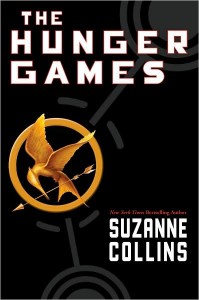Symbolism is a tricky element for writers to master. Its ability to represent ideas and qualities requires deeper thought than other literary elements do. But when symbolism is used effectively, it can make a story even more powerful and unforgettable. Plus, its purpose can serve as another way of nurturing literary themes.
Today, we’ll look at symbolism as part of the return of our Developing Themes In Your Stories series. This post will also feature activities you can use during any point in the writing process.
Five Keys to Connecting Symbolism with Theme
We rarely know what a story’s symbols will be when we start writing a story. Once we do, our challenge is how to effectively express that symbolism. If it’s too obvious or frequent, it can annoy readers or give the story a preachy tone. However, if it’s too abstract or thrown in haphazardly, it won’t hold much meaning.
As a result, the thought of connecting symbolism to a story’s themes might intimidate some writers. However, what if we consult our working definition of “theme”? It starts off with the words, “An idea, concept, or lesson….” If themes are ideas or concepts, then symbolism is a vessel for delivering those ideas and concepts. In other words, symbols should accurately reflect a story’s themes, and therefore must be chosen carefully.
To ensure our symbols connect with appropriate themes, let’s use these five keys based on our working definition of “theme”:
- Theme Expressed: What theme does the symbol represent?
- Medium: What form(s) does this symbol take (e.g., objects, dialogue, names)?
- Significance: How is the symbol important to the story? Is its importance limited to the protagonist (e.g., Tris’s bird tattoos in Divergent)? Or, does it impact the story world at large (e.g., The One Ring in Lord of the Rings)?
- Frequency: Does the symbol recur on an as-needed basis?
- Timing: Does the symbol appear at appropriate moments that link it to its respective theme?
So, what kinds of symbols can we use in our stories? Let’s look at two types and see how they’re handled in different stories.
Using Symbols from the Real World
 We see symbols every day, from traffic lights and road signs to cultural images like the Celtic cross and the Chinese yin yang. Even colors, numbers, and names mean something. These everyday items are often a source of inspiration for literary symbolism that ties in with theme.
We see symbols every day, from traffic lights and road signs to cultural images like the Celtic cross and the Chinese yin yang. Even colors, numbers, and names mean something. These everyday items are often a source of inspiration for literary symbolism that ties in with theme.
Using real-world symbols means understanding what those symbols reflect. A heart shape for death won’t work, since readers might be confused by the conflicting ideas at play. Instead, take some time to research the symbols you’re considering. Find out which ideas and concepts they represent, and see if they fit the story’s themes. That way, readers will be better able to link the tangible (the symbol) with the abstract (idea / concept) after multiple readings.
Maria V. Snyder’s Poison Study is a great example of butterflies as a symbol. When the novel begins, the protagonist Yelena must choose between being executed for murder, or accepting a job as the military commander’s food-taster. She chooses the latter and is immediately given a lethal dose of a poison called Butterfly’s Dust. Only a daily antidote from her boss Valek will keep her alive, rendering Yelena completely dependent on him. (20) This loss of independence conflicts with the perception of butterflies, which can fly freely from place to place. Then again, wouldn’t a name “Butterfly’s Dust” crush one’s hope of escape?
Both the symbol and the theme of freedom return throughout Poison Study. At one point, Valek gives Yelena a butterfly pendant and tells her, “When I carved this statue, I was thinking of you. Delicate in appearance, but with a strength unnoticed at first glance.” (336) It’s Valek’s way of acknowledging that not only Yelena has grown tremendously during their time together (just as butterflies undergo metamorphosis), but that she also deserves the freedom he had taken from her. This idea comes back at the end of the novel, when Valek encourages Yelena to start a new life: “You need to learn, you need to find your family, you need to spread your wings and see how far you can fly.” (407)
Activity #1:
Review some of the names, tokens, and other objects in your WIP that are also found in the real world, and research their potential symbolism. Do the represented ideas and concepts match those explored in your story? It not, what other names, tokens, or objects might be a better fit?
Using Symbols Specific to the Story
 Symbolism can also be drawn from within the story. Some symbols can be personal to a character, such as a tattoo chosen for a specific reason or a necklace, coin, or other token that elicits certain memories. Others come from aspects of the story world’s history or culture that are significant to both the protagonist and the overall plot.
Symbolism can also be drawn from within the story. Some symbols can be personal to a character, such as a tattoo chosen for a specific reason or a necklace, coin, or other token that elicits certain memories. Others come from aspects of the story world’s history or culture that are significant to both the protagonist and the overall plot.
With a story-specific symbol, it’s crucial to share relevant history or backstory so readers can draw accurate conclusions about its meaning. Be careful not to “info-dump” when introducing the symbol, though. Include the necessary details, then treat the symbol’s later appearances in the story as echoes to that introduction and hints to its respective theme.
One recent example is the mockingjay in Suzanne Collins’ The Hunger Games. Before leaving for the Capitol, Katniss Everdeen receives a mockingjay pin and briefly recalls the bird’s origins. In her world, mockingjays are the offspring of mockingbirds and jabberjays, a spy-bird species created by the Capitol to memorize and repeat human conversation (43). When the jabberjay project was shut down, the birds were left to die in the wild. Yet they didn’t, making their mockingjay descendants – which can replicate bird calls and human vocal melodies – a “slap in the face to the Capitol” (42), a product of the Capitol’s inability to impose its power on everyone.
As The Hunger Games continues, both the bird and its symbolism reappear. When Katniss’s stylist Cinna fastens the mockingjay pin to her Games outfit, he mentions how the pin “barely cleared the review board” (145) as a potential weapon. Later, Katniss sings a lullaby to comfort her dying ally Rue, and a flock of mockingjays repeat her song (235). From that point on, Katniss ensures her choices have a clear purpose: She wants to win the Hunger Games and prove she’s not the Capitol’s pawn. She becomes a metaphorical mockingjay, a symbol of resistance and rebellion against her government that carries on for the rest of the series.
Activity #2:
Revisit your story world and character backstories. Do any names, tokens, and other objects bear a personal, cultural, or historical significance? How does this significance relate to the story’s themes?
So, How Do Symbols Tie In With Theme?
Let’s evaluate both examples using our Five Keys to Connecting Symbolism with Theme:
- Theme Expressed: Poison Study’s butterfly conveys the theme of freedom. The Hunger Games’ mockingjay serves as a counterpoint to the theme of power.
- Medium: The butterfly appears in names (Butterfly’s Dust poison), the butterfly pendant, and dialogue (Valek comparing Yelena to the insect). The mockingjay appears as a pin as well as its natural bird form.
- Significance: Both symbols grow in importance during their stories. The butterfly in Poison Study bears personal significance to Yelena, while the mockingjay in The Hunger Games evolves from a personal symbol for Katniss to Panem’s emblem for revolution in the later books.
- Frequency: As shown in the examples above, both symbols recur throughout their respective stories.
- Timing: The butterfly appears in Poison Study whenever Yelena faces an event that threatens or presents her with a chance for escape. The mockingjay returns in The Hunger Games to show how Katniss’s character mirrors the bird’s history and abilities, and to remind Katniss to play the Games by her rules and not the Capitol’s.
See how both symbols check off all of our criteria? Ensuring the same with the symbols in our stories will allow us to illustrate literary themes in the same, subtle manner. Of course, finding the right symbols and using them appropriately will take patience, practice, and creative thinking. But if we use the five keys presented here, we’ll be better able to nurture themes through symbolism and write richer, more resonant stories for our readers.
Activity #3:
Answer the questions posed in the Five Keys to Connecting Symbols with Theme with the symbols you examined in Activities #1 and #2. Based on your answers, how effective are these symbols in the story? If needed, what changes could you make to improve the symbolism (e.g., increase or decrease the number of appearances in the text, raise its significance)?
Just as symbolism is a way of reflecting a story’s themes, so is the inciting incident. This plot point will be the subject of May’s installment of Developing Themes In Your Stories.
 Sara Letourneau is a Massachusetts-based writer who practices joy and versatility in her work. In addition to writing for DIY MFA, she’s revising a YA fantasy novel and reviewing tea for A Bibliophile’s Reverie. Her poetry has appeared in The Curry Arts Journal, Soul-Lit, The Eunoia Review, Underground Voices, and two anthologies. Learn more about Sara at her personal blog, Facebook, and Twitter.
Sara Letourneau is a Massachusetts-based writer who practices joy and versatility in her work. In addition to writing for DIY MFA, she’s revising a YA fantasy novel and reviewing tea for A Bibliophile’s Reverie. Her poetry has appeared in The Curry Arts Journal, Soul-Lit, The Eunoia Review, Underground Voices, and two anthologies. Learn more about Sara at her personal blog, Facebook, and Twitter.







